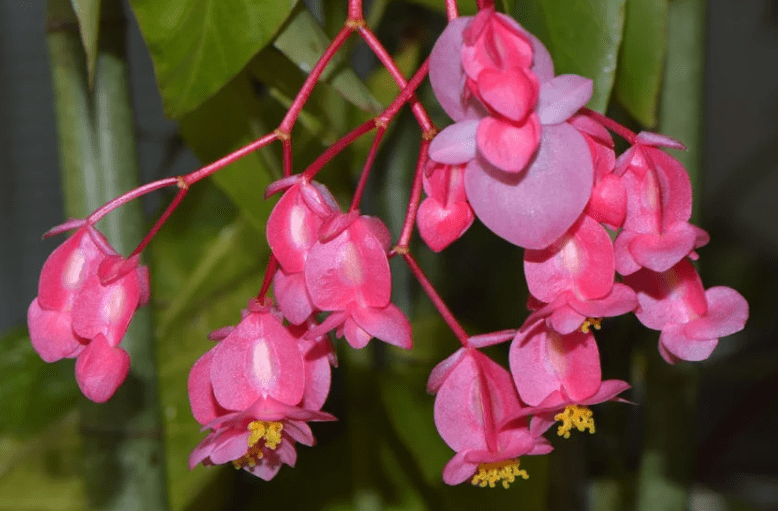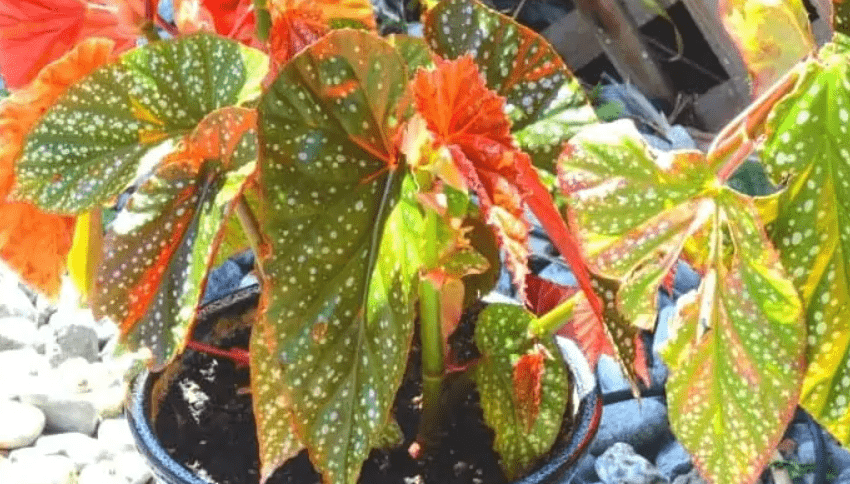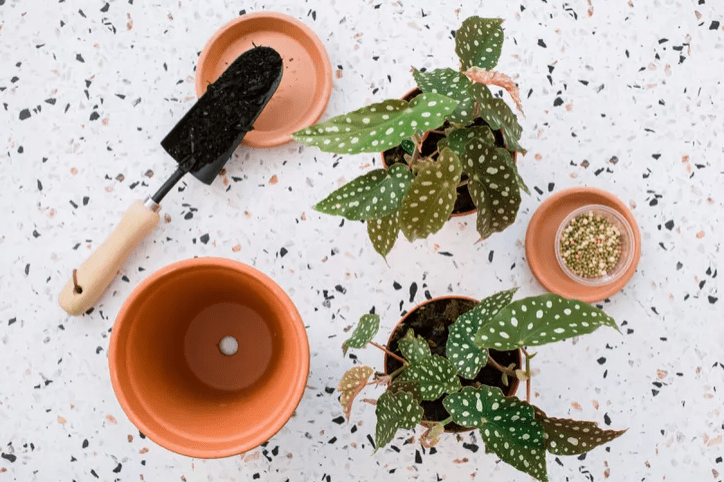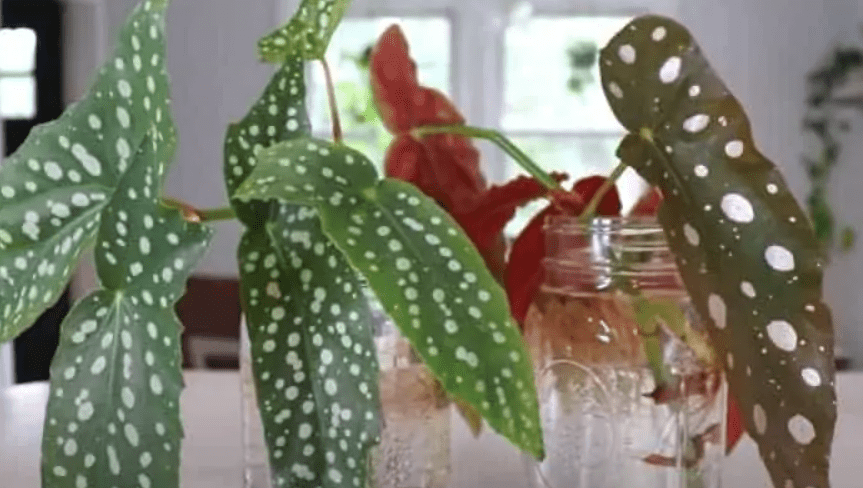
Angel Wing Begonia Care: Your Ultimate Guide to Healthy Plants
Are you tired of struggling to keep your Angel Wing Begonias alive and thriving? Look no further, because this ultimate guide to Angel Wing Begonia care has everything you need to ensure your plants stay healthy and beautiful. From watering and sunlight requirements to pest control and propagation, we’ve got you covered. Say goodbye to wilted leaves and hello to lush, vibrant plants with the help of this comprehensive guide. Don’t settle for subpar care information – follow our tips and watch your Angel Wing Begonias flourish like never before.
Table of Contents
ToggleUnderstanding Angel Wing Begonias
Description of Angel Wing Begonias
Angel Wing Begonias are a stunning and popular choice for indoor and outdoor plants. They are known for their striking, wing-shaped leaves that come in a variety of colors and patterns. These plants can grow up to 2 feet tall and are perfect for adding a touch of elegance to any space. Angel Wing Begonias thrive in bright, indirect light and prefer well-draining soil. They require regular watering, but it’s important not to overwater them as this can lead to root rot. These plants are also prone to pests like aphids and mealybugs, so it’s important to keep an eye out for any signs of infestation. With the right care and attention, Angel Wing Begonias can bring beauty and charm to your home or garden. So, don’t hesitate to add these stunning plants to your collection and follow our ultimate guide to keep them healthy and thriving.

Origin and history
Angel Wing Begonias have a rich history and origin. These beautiful plants were first discovered in the tropical regions of South America, particularly in countries like Brazil and Peru. They were named after Michel Bégon, a former governor of the French colony of Haiti, who was an avid botanist and plant collector. The Angel Wing Begonia care has since become a popular ornamental plant in many parts of the world due to its stunning foliage and easy care requirements. These plants have been cultivated and hybridized over the years to create a wide variety of colors and patterns, making them a favorite among gardeners and plant enthusiasts. Their origins in the tropical regions also make them well-suited for indoor and outdoor settings, as they thrive in warm, humid environments. Understanding the origin and history of the Angel Wing Begonia can help you appreciate these plants even more and inspire you to incorporate them into your home or garden.
Unique characteristics and varieties
The Angel Wing Begonia is a truly special plant with unique characteristics and a wide variety of colors and patterns. These plants are known for their stunning foliage, which features large, glossy leaves and beautiful clusters of flowers. They come in a range of colors, including vibrant shades of red, pink, and white, as well as variegated patterns that add a touch of elegance to any garden or indoor space. The unique cane-like stems of the Angel Wing Begonia give them a graceful and airy appearance, making them a beautiful addition to any garden or home. With their easy care requirements and adaptability to different environments, they are a favorite among plant enthusiasts and gardeners. Whether you prefer a classic green variety or a more vibrant and colorful option, there is an Angel Wing Begonia variety to suit every taste and style. These plants truly stand out and add a touch of beauty and elegance wherever they are placed.
Ideal Growing Conditions
Optimal lighting requirements
Are an important factor in the successful cultivation of Angel Wing Begonias. These plants thrive in bright, indirect light, making them perfect for indoor spaces with large windows or outdoor areas with filtered sunlight. It is essential to provide the right amount of light to ensure healthy growth and abundant flowering. Additionally, these plants prefer high humidity and well-draining soil to keep them happy and thriving. By providing the ideal growing conditions, you can enjoy the beauty of these unique plants and their stunning foliage all year round. Whether you are a seasoned gardener or new to plant care, the Angel Wing Begonia is a perfect choice for adding a touch of elegance and beauty to your home or garden. With their unique characteristics and wide variety of colors and patterns, these plants are sure to impress and bring joy to any space.

Temperature and humidity preferences
Are crucial factors to consider when cultivating Angel Wing Begonias. These plants thrive in warm, humid environments and require consistent temperatures between 65-75 degrees Fahrenheit. It is important to keep them away from drafty areas and drastic temperature fluctuations, as these can negatively impact their growth and flowering. In terms of humidity, Angel Wing Begonias prefer a high humidity level of around 50-60%. You can achieve this by misting the plants regularly, placing a humidifier nearby, or using a pebble tray filled with water to increase the moisture in the air. By providing the ideal temperature and humidity conditions, you can ensure that your Angel Wing Begonias are healthy, vibrant, and full of life. Don’t let the fear of not being a green thumb deter you from trying to cultivate these beautiful plants. With a little bit of knowledge and care, you can create the perfect environment for these stunning begonias to thrive. So, go ahead and bring home an Angel Wing Begonia to add a touch of elegance and natural beauty to your living space. You won’t regret it!
Soil type and potting mix recommendations
Are essential for the health and growth of Angel Wing Begonias. These plants thrive in well-drained soil that is rich in organic matter. A good potting mix for Angel Wing Begonias should be light, fluffy, and have excellent drainage. You can mix potting soil with perlite or vermiculite to improve its drainage and aeration. It’s also important to ensure that the soil pH is slightly acidic, around 5.5-6.5, to provide the best growing conditions for these plants.
When choosing a pot for your Angel Wing Begonias, opt for a container with drainage holes to prevent waterlogging and root rot. The size of the pot should be proportional to the size of the plant, allowing for room for growth but not too much excess space.
In conclusion, providing the right soil type and potting mix is crucial for the health and vitality of Angel Wing Begonias. With the proper care and attention to their growing conditions, you can enjoy the beauty of these stunning plants in your home or garden. So don’t hesitate to invest in the right soil and potting mix for your Angel Wing Begonias and watch them thrive and flourish in their optimal environment.
Watering Angel Wing Begonias
Proper watering techniques
Are crucial to the health and growth of your plants. It’s important to water your Angel Wing Begonias thoroughly, allowing the water to soak into the soil and reach the roots. However, it’s equally important not to overwater, as this can lead to root rot and other issues. To ensure that you are watering your plants correctly, you can use a simple watering schedule or check the soil moisture with your finger. If the top inch of soil feels dry, it’s time to water your plants. It’s also important to water your Angel Wing Begonias in the morning, allowing the leaves to dry before nightfall to prevent disease and rot. By following these proper watering techniques, you can help your Angel Wing Begonias to thrive and flourish in their environment. So take the time to water your plants correctly and watch them grow beautifully and vibrantly. Your efforts will be rewarded with stunning, healthy plants that bring joy and beauty to your home or garden.
Frequency of watering
Is crucial for the health and growth of your plants. It’s important to give your plants the right amount of water to ensure their optimal growth. Overwatering can lead to root rot and other issues, so it’s essential to find the right balance. To ensure that you are watering your plants correctly, you can use a simple watering schedule or check the soil moisture with your finger. If the top inch of soil feels dry, it’s time to water your plants. This will ensure that your plants are getting the water they need without being overwatered. In addition, it’s important to water your plants in the morning, allowing the leaves to dry before nightfall to prevent disease and rot. By following these proper watering techniques, you can help your plants to thrive and flourish in their environment. So take the time to water your plants correctly and watch them grow beautifully and vibrantly. Your efforts will be rewarded with stunning, healthy plants that bring joy and beauty to your home or garden.
Signs of overwatering and underwatering
Can be easily identified if you pay attention to your plants. Overwatering can lead to yellowing leaves, wilting, and root rot, while underwatering can cause dry, brown, and crispy leaves. It’s important to keep an eye on the condition of your plants and adjust your watering habits accordingly. By being observant and responsive to the needs of your plants, you can ensure that they receive the right amount of water to thrive. This will help you maintain a healthy and vibrant garden or indoor plant collection. Remember, proper watering is essential for the health and growth of your plants, so take the time to monitor and adjust your watering routine as needed. Your plants will thank you for it with beautiful, lush foliage and vibrant blooms.
Fertilizing Your Angel Wing Begonias
Best fertilizers for Angel Wing Begonias
Angel Wing Begonias thrive with a balanced, water-soluble fertilizer that is high in nitrogen to promote healthy foliage growth. Look for a fertilizer with a ratio of 20-20-20 or something similar. It’s important to feed your plants during the growing season, typically from spring to fall, to ensure they have the nutrients they need to thrive. Be sure to follow the instructions on the fertilizer label and avoid over-fertilizing, as this can lead to burned leaves and other issues. With the right fertilizer, your Angel Wing Begonias will reward you with lush, healthy foliage and beautiful blooms. So, take the time to nourish your plants with the best fertilizer and watch them flourish. Your efforts will be worth it when you see your begonias thriving and bringing joy to your home or garden.

How often to fertilize
Your Angel Wing Begonias should be fertilized every 2-4 weeks during the growing season, which is typically from spring to fall. It’s important to use a balanced, water-soluble fertilizer with a high nitrogen content to promote healthy foliage growth. Look for a fertilizer with a ratio of 20-20-20 or something similar. Be sure to follow the instructions on the fertilizer label and avoid over-fertilizing, as this can lead to burned leaves and other issues. By nourishing your plants with the best fertilizer, you can ensure that they have the nutrients they need to thrive and produce beautiful blooms. Your dedication to properly caring for your Angel Wing Begonias will result in lush, healthy foliage and vibrant flowers that will bring beauty and joy to your home or garden. So, make sure to fertilize regularly and watch your begonias flourish!
Pruning and Maintenance
When and how to prune Angel Wing Begonias
Pruning your Angel Wing Begonias is essential for maintaining their health and promoting new growth. It’s best to prune them in the spring or early summer before they begin their active growth period. Use clean, sharp pruning shears to remove any dead or yellowing leaves, as well as any overly long or leggy stems. This will encourage new growth and keep your begonias looking neat and tidy.
You can also pinch off the growing tips of the stems to encourage branching and a bushier growth habit. Be sure to remove any spent flowers to promote continued blooming throughout the season. Regular maintenance and pruning will keep your Angel Wing Begonias looking their best and encourage a more robust and healthy plant overall. So, don’t be afraid to give them a little trim to keep them in top shape!
Deadheading flowers
Is an important part of maintaining a healthy and beautiful garden. By removing dead or faded flowers from your plants, you can encourage new growth and prolong the blooming period. This not only keeps your garden looking its best, but also helps to promote the overall health and vitality of your plants. It’s a simple and easy task that can make a big difference in the appearance of your garden. So, don’t hesitate to spend a little time deadheading your flowers and enjoy the benefits of a vibrant and colorful garden all season long!
General maintenance tips for a healthy plant
Include regular watering, proper sunlight exposure, and regular fertilization. Make sure to water your plants when the top inch of soil is dry to the touch, and be mindful not to overwater as this can lead to root rot. Providing your plants with the right amount of sunlight is crucial for their growth and overall health. Be sure to place them in a location where they can receive the appropriate amount of sunlight for their specific needs. Additionally, fertilizing your plants every few weeks during the growing season can help provide them with the essential nutrients they need to thrive. It’s also important to keep an eye out for any signs of pests or diseases and address them promptly to ensure the health of your plants. By following these simple maintenance tips, you can enjoy a healthy and vibrant garden all season long. Don’t underestimate the power of regular maintenance in keeping your plants healthy and thriving!
Common Problems and Solutions
Pest issues and how to tackle them
Pests can wreak havoc on your plants and garden, but there are ways to tackle these issues. One effective method is to use natural predators, such as ladybugs or praying mantises, to control pest populations. You can also try using organic pest control products, like neem oil or diatomaceous earth, to keep pests at bay without harming your plants or the environment.
Another important step in tackling pest issues is to practice good garden hygiene. This includes regularly removing dead or diseased plants, as well as cleaning up any debris or weeds that can harbor pests. By keeping your garden clean and tidy, you can minimize the risk of pest infestations.
It’s also vital to monitor your plants regularly for any signs of pests or diseases. Early detection is key in preventing the spread of infestations and ensuring the overall health of your garden. If you do notice any issues, take swift action to address them, whether it’s through manual removal of pests, introducing natural predators, or using organic pest control products.
By taking a proactive approach to pest issues and implementing these strategies, you can protect your plants and garden from harm while promoting a healthy and thriving environment for your plants to grow. Don’t let pests take over – tackle the issue head-on and keep your garden flourishing!
Common diseases and treatments
Diseases and pests can wreak havoc on your beloved plants and garden. It’s important to stay on top of monitoring your plants for any signs of infestations or diseases. By regularly removing dead or diseased plants and keeping your garden clean and tidy, you can minimize the risk of pests taking over. Be proactive and take swift action to address any issues that arise, whether it’s through manual removal of pests, introducing natural predators, or using organic pest control products. Don’t let these common garden problems ruin all of your hard work and effort. Take charge and protect your garden from harm while promoting a healthy and thriving environment for your plants to grow. Keep your garden flourishing by tackling these issues head-on!
Propagating Angel Wing Begonias
Methods of propagation (cuttings, division)
Propagating your Angel Wing Begonias is an exciting and rewarding process that allows you to create new plants and expand your garden. There are two primary methods of propagation for Angel Wing Begonias: cuttings and division. Both methods are effective and relatively easy to do, so don’t be afraid to give it a try!
Cuttings involve taking a section of the stem from your existing plant and placing it in water or soil to encourage root growth. This method is great for creating new plants from a single parent plant and allows you to ensure that the new plant will have the same characteristics as the parent.
Division, on the other hand, involves separating the rhizomes or tubers of the plant to create new individual plants. This method is ideal for mature plants that have multiple stems and can be a great way to rejuvenate an older plant or create multiple new plants from a single parent.
Both methods of propagation are relatively simple and can be a fun and rewarding way to expand your collection of Angel Wing Begonias. So don’t be afraid to give it a try and watch your garden flourish with new plants! Happy propagating!

Step-by-step propagation guide
Propagation is a great way to expand your plant collection and create new plants from existing ones. Cuttings involve taking a section of the stem from your existing plant and placing it in water or soil to encourage root growth. This method is great for creating new plants from a single parent plant and allows you to ensure that the new plant will have the same characteristics as the parent. Division, on the other hand, involves separating the rhizomes or tubers of the plant to create new individual plants. This method is ideal for mature plants that have multiple stems and can be a great way to rejuvenate an older plant or create multiple new plants from a single parent. Both methods of propagation are relatively simple and can be a fun and rewarding way to expand your collection of plants. So don’t be afraid to give it a try and watch your garden flourish with new plants! Happy propagating!
Seasonal Care Tips
Care during different seasons (spring, summer, fall, winter)
It’s important to take care of your plants during different seasons to ensure they thrive year-round. In the spring, focus on planting new cuttings or divided plants to take advantage of the growth season. Keep an eye on watering and provide extra nutrients to support healthy growth. In the summer, make sure to protect your plants from the heat and provide shade if necessary. Keep up with regular maintenance and pruning to keep your garden looking its best. In the fall, prepare your plants for the colder weather by bringing them indoors or providing extra insulation. Keep an eye on watering and make sure to protect your plants from frost. In the winter, focus on providing extra warmth and protection for your plants to survive the cold weather. With proper care and attention, your plants will thrive in every season. Take on the challenge of caring for your plants year-round and watch them flourish with your dedication!
In conclusion, by following the tips and advice in this guide, you can ensure that your Angel Wing Begonias will thrive and bring beauty to your home. Taking care of your plants is a rewarding experience, and with the right knowledge and attention, you can have healthy, vibrant Begonias that will bring joy for years to come. So don’t wait, start implementing these tips today and watch your plants flourish!
Frequently asked questions And Answer
It’s important to water your Angel Wing Begonia when the top inch of soil feels dry to the touch. This typically means watering every 1-2 weeks, but always check the soil moisture before watering.
Angel Wing Begonias prefer bright, indirect light. Avoid direct sunlight, as it can scorch the leaves. A north or east-facing window is ideal for these plants.
Fertilize your Angel Wing Begonia with a balanced, water-soluble fertilizer every 4-6 weeks during the growing season (spring and summer). Be sure to follow the instructions on the fertilizer packaging for the best results.
Yellowing leaves can be a sign of overwatering, underwatering, or nutrient deficiency. Check the soil moisture and adjust your watering schedule accordingly. If the issue persists, consider fertilizing your plant or repotting it with fresh, well-draining soil.
Yes, Angel Wing Begonias can be propagated from stem cuttings. Simply take a 4-6 inch cutting from a healthy stem, remove the lower leaves, and place the cutting in moist soil or water. Roots should develop within a few weeks.
Spider mites, mealybugs, and powdery mildew are common pests and diseases that can affect Angel Wing Begonias. Keep an eye out for any signs of infestation and treat them promptly with the appropriate insecticide or fungicide.
Pruning can help promote bushier growth and remove any leggy or damaged stems. Use clean, sharp scissors or pruning shears to trim back the plant as needed, focusing on removing dead or unhealthy growth.
During the winter months, reduce watering and fertilizing to allow your Angel Wing Begonia to enter a period of dormancy. Keep the plant in a cool (55-65°F), well-lit area and resume regular care in the spring.
